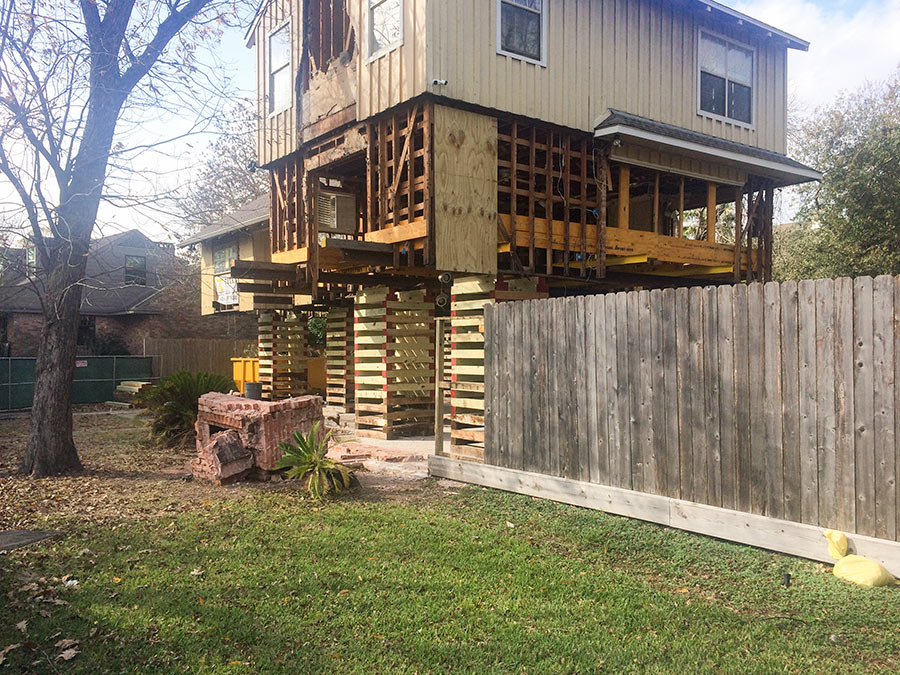NEARLY 100 MEYERLAND HOUSES WILL SOON BE UP OFF THE GROUND  Forty homes total have now been elevated in Meyerland and 57 are currently on the way up, reports Nancy Sarnoff. Their boosters are seeking the same degree of flood protection enjoyed by the 29 percent of Meyerland homeowners whose houses have never flooded in the past. A few elevations have been paid for by the City of Houston; others were self-funded. [Houston Chronicle ($); previously on Swamplot] Photo of 4718 N. Braeswood Blvd.: Christine Gerbode
Forty homes total have now been elevated in Meyerland and 57 are currently on the way up, reports Nancy Sarnoff. Their boosters are seeking the same degree of flood protection enjoyed by the 29 percent of Meyerland homeowners whose houses have never flooded in the past. A few elevations have been paid for by the City of Houston; others were self-funded. [Houston Chronicle ($); previously on Swamplot] Photo of 4718 N. Braeswood Blvd.: Christine Gerbode





I know that those that are staying in Meyerland have both financial and emotional investments in those homes but an added $160,000 to $325,000 to elevate just seems too high.
.
As the article noted, half of the Meyerland homes on the MLS are “as is”. But, I guess the $2.5 billion flood bond will make everything better in short order. (sarcasm)
This house looks really high. I can’t tell where the bottom floor is, is it at the fence line? Do you then raise your fence for privacy?
The house pictured was elevated one full floor, and I think they are tucking the garage underneath. If designed properly, elevated homes can be pretty well integrated into the area. If they “go cheap,” then it’s basically a skirted beach house. This house looks to be turning into the latter, unfortunately. I’m happy to be one of the ~29% who has never flooded, and equally happy to see those that have able to move forward.
Im less familiar with IRC (International residential code), but with the IBC (International building code) and IEBC (same thing but “existing” for E) elevating a building like that will require modifications to the wind-resisting system of the building. 1-2 ft isnt much of a difference, but that picture shows a full floor essentially being added. Call me a skeptic that the residential engineers performing these actions are properly retrofitting the upper portions of the structure for the drastically increased wind pressures as a result of higher elevations. Building clad attachments, windows, structural framing, all of which is now essentially far different on load path orientation and magnitude than it was before. Not to mention that the code requirements of today, especially for wind, are significantly higher than they were when these structures were originally built.
They may have rectified their flooding problem during a hurricane, but created a new problem for them: Wind during hurricanes.
@StructuralEnginerd–Not sure about the company who lifted that exact home (Titan, I believe), but the other contractors (Arkitectura and P3) have extensive track records along the coast. I assume this gives them the experience to understand the wind load impact of raising a structure.
Sell the property and move/rebuild elsewhere. Because flooding will happen repeatedly.